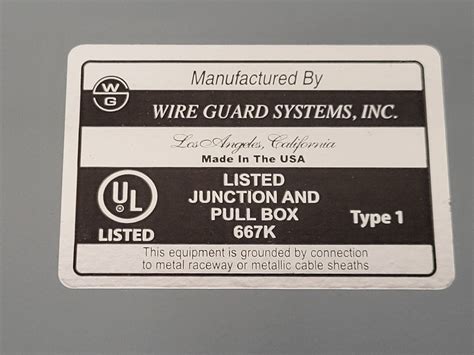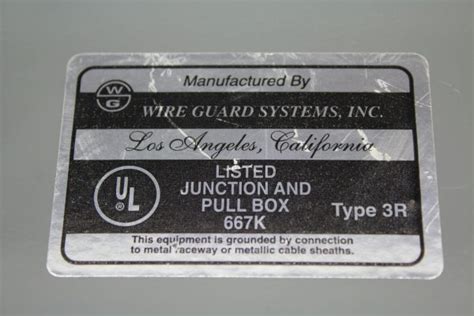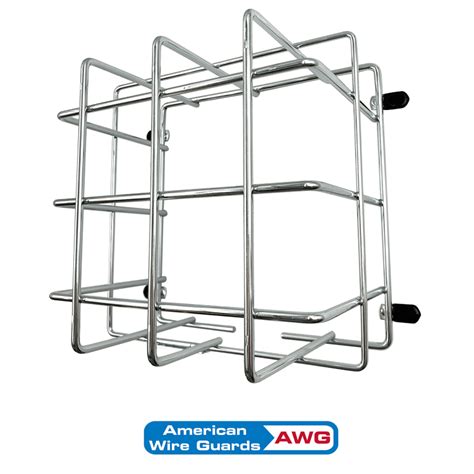electrical enclosure guarding Electrical installations that are open to unqualified persons shall be made with metal-enclosed equipment or shall be enclosed in a vault or in an area, access to which is controlled by a lock. $246.99
0 · wire guard systems inc website
1 · wire guard systems inc catalog
2 · wire guard systems catalog
3 · outdoor electrical wire wrap
4 · interior electrical wiring covers protection
5 · floor mounted single outlets
6 · electrical floor outlets receptacle
7 · conduit cover for external walls
You just need the welders mask, propane torch and the small metal sheets in your main inventory and you need a metalworking skill of level 4. If all of those requirements are met you can either right click on the metal sheets to get the option or use the aforementioned crafting menu to craft them.
Enclosure for electrical installations. 1910.303(h)(2)(i) Electrical installations in a vault, room, or closet or in an area surrounded by a wall, screen, or fence, access to which is controlled by lock and key or other approved means, are considered to be accessible to qualified persons only.The site is secure. The https:// ensures that you are connecting to the official website .The site is secure. The https:// ensures that you are connecting to the official website .Electrical installations that are open to unqualified persons shall be made with metal-enclosed equipment or shall be enclosed in a vault or in an area, access to which is controlled by a lock.
This subpart addresses electrical safety requirements that are necessary for the practical safeguarding of employees in their workplaces and is divided into four major divisions as .
To avoid the risk of accidental shock, live electrical components operating at 50 volts or more must be guarded with covers or other permanent barriers to prevent accidental contact by workers and their tools. Equipment . Response: The provision in question, 29 CFR 1910.303 (g) (2) (i), generally requires "live parts of electric equipment operating at 50 volts or more" to be "guarded against . Guarding involves locating or enclosing electric equipment to make sure people do not accidentally contact live parts. Effective guarding requires equipment with exposed parts operating at 50 volts or more to be .
To avoid the risk of accidental shock, live electrical components operating at 50 volts or more must be guarded with covers or other permanent barriers to prevent accidental contact by .
Section 110.27 provides the following methods for the guarding of live parts: Guarding by using enclosures, rooms or vaults. Guarding by using partitions or screens. Enhance workplace safety with expert tips on guarding electrical equipment to prevent shocks and injuries. Learn more about creating a safer workspace.Enclosure for electrical installations. 1910.303(h)(2)(i) Electrical installations in a vault, room, or closet or in an area surrounded by a wall, screen, or fence, access to which is controlled by lock and key or other approved means, are considered to be accessible to qualified persons only.Electrical installations that are open to unqualified persons shall be made with metal-enclosed equipment or shall be enclosed in a vault or in an area, access to which is controlled by a lock.
This subpart addresses electrical safety requirements that are necessary for the practical safeguarding of employees in their workplaces and is divided into four major divisions as follows: (a) Design safety standards for electrical systems. These regulations are contained in §§ 1910.302 through 1910.330. Electrical guarding is the process of enclosing or protecting electrical equipment to prevent accidental contact with live parts or electrical hazards. Electrical guarding is an essential aspect of electrical safety and is necessary to protect . To avoid the risk of accidental shock, live electrical components operating at 50 volts or more must be guarded with covers or other permanent barriers to prevent accidental contact by workers and their tools. Equipment can also be locked behind an enclosure, in a room, or at an elevated height. Response: The provision in question, 29 CFR 1910.303 (g) (2) (i), generally requires "live parts of electric equipment operating at 50 volts or more" to be "guarded against accidental contact by use of approved cabinets or other forms of .
Guarding involves locating or enclosing electric equipment to make sure people do not accidentally contact live parts. Effective guarding requires equipment with exposed parts operating at 50 volts or more to be placed where it is accessible only to authorized people qualified to work with it.
wire guard systems inc website
wire guard systems inc catalog


To avoid the risk of accidental shock, live electrical components operating at 50 volts or more must be guarded with covers or other permanent barriers to prevent accidental contact by workers and their tools. Equipment can also be locked behind an enclosure, in .
Section 110.27 provides the following methods for the guarding of live parts: Guarding by using enclosures, rooms or vaults. Guarding by using partitions or screens.
Enhance workplace safety with expert tips on guarding electrical equipment to prevent shocks and injuries. Learn more about creating a safer workspace.
Enclosure for electrical installations. 1910.303(h)(2)(i) Electrical installations in a vault, room, or closet or in an area surrounded by a wall, screen, or fence, access to which is controlled by lock and key or other approved means, are considered to be accessible to qualified persons only.
Electrical installations that are open to unqualified persons shall be made with metal-enclosed equipment or shall be enclosed in a vault or in an area, access to which is controlled by a lock.This subpart addresses electrical safety requirements that are necessary for the practical safeguarding of employees in their workplaces and is divided into four major divisions as follows: (a) Design safety standards for electrical systems. These regulations are contained in §§ 1910.302 through 1910.330. Electrical guarding is the process of enclosing or protecting electrical equipment to prevent accidental contact with live parts or electrical hazards. Electrical guarding is an essential aspect of electrical safety and is necessary to protect . To avoid the risk of accidental shock, live electrical components operating at 50 volts or more must be guarded with covers or other permanent barriers to prevent accidental contact by workers and their tools. Equipment can also be locked behind an enclosure, in a room, or at an elevated height.
Response: The provision in question, 29 CFR 1910.303 (g) (2) (i), generally requires "live parts of electric equipment operating at 50 volts or more" to be "guarded against accidental contact by use of approved cabinets or other forms of . Guarding involves locating or enclosing electric equipment to make sure people do not accidentally contact live parts. Effective guarding requires equipment with exposed parts operating at 50 volts or more to be placed where it is accessible only to authorized people qualified to work with it.
To avoid the risk of accidental shock, live electrical components operating at 50 volts or more must be guarded with covers or other permanent barriers to prevent accidental contact by workers and their tools. Equipment can also be locked behind an enclosure, in .Section 110.27 provides the following methods for the guarding of live parts: Guarding by using enclosures, rooms or vaults. Guarding by using partitions or screens.

wire guard systems catalog
outdoor electrical wire wrap
ZYCI uses high-end fiber laser technology to provide precise laser marking .
electrical enclosure guarding|wire guard systems catalog